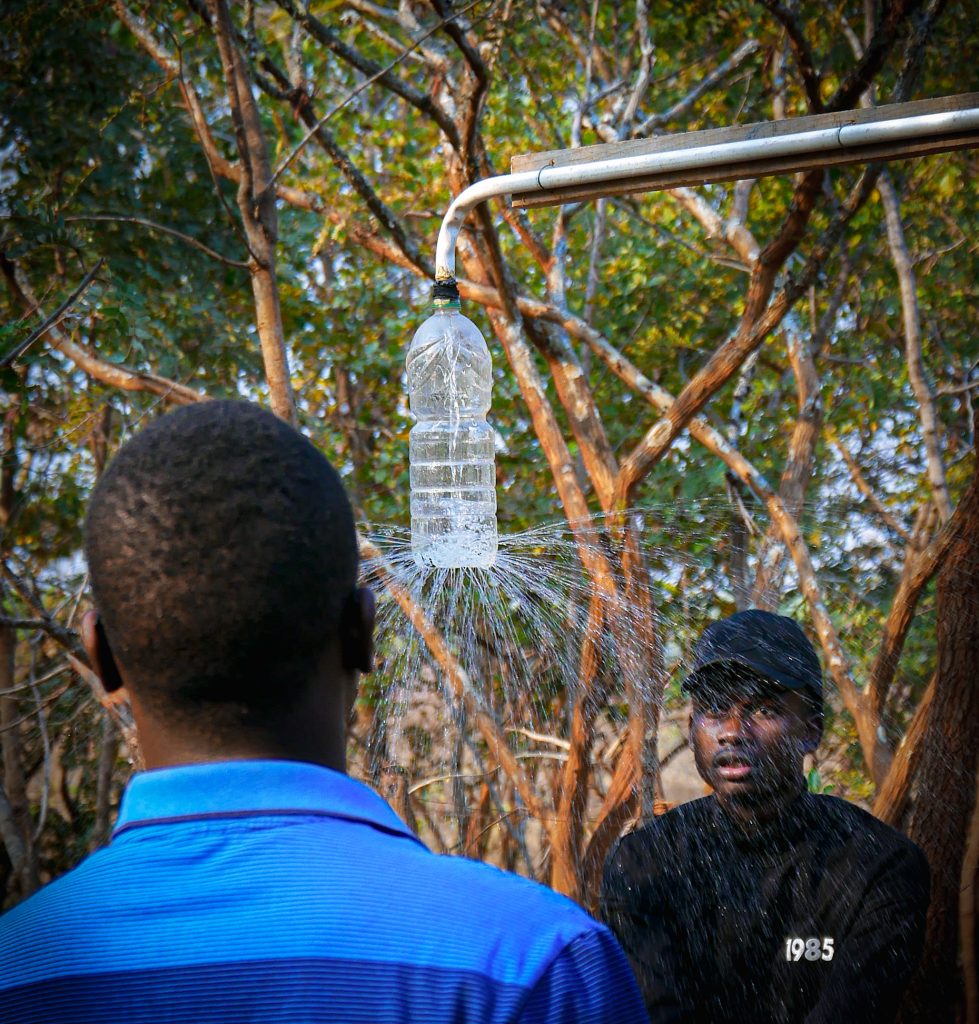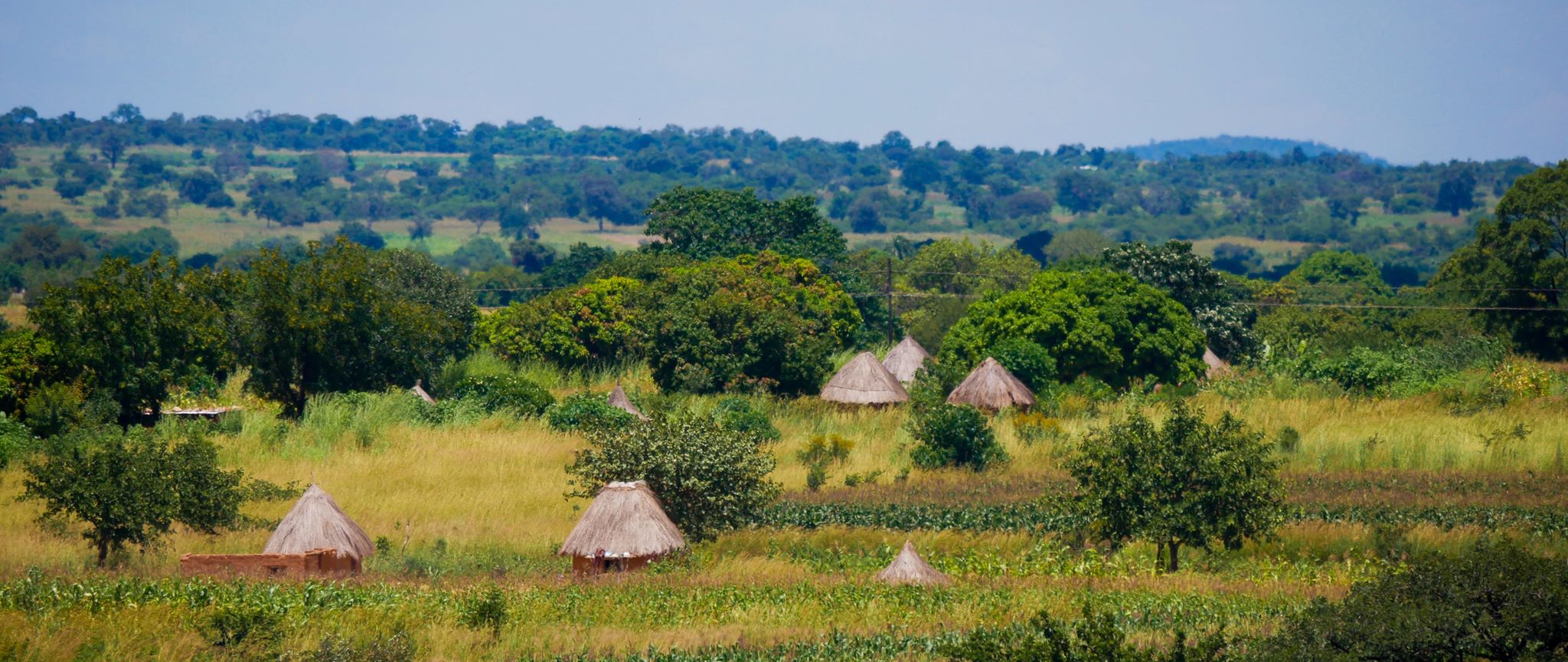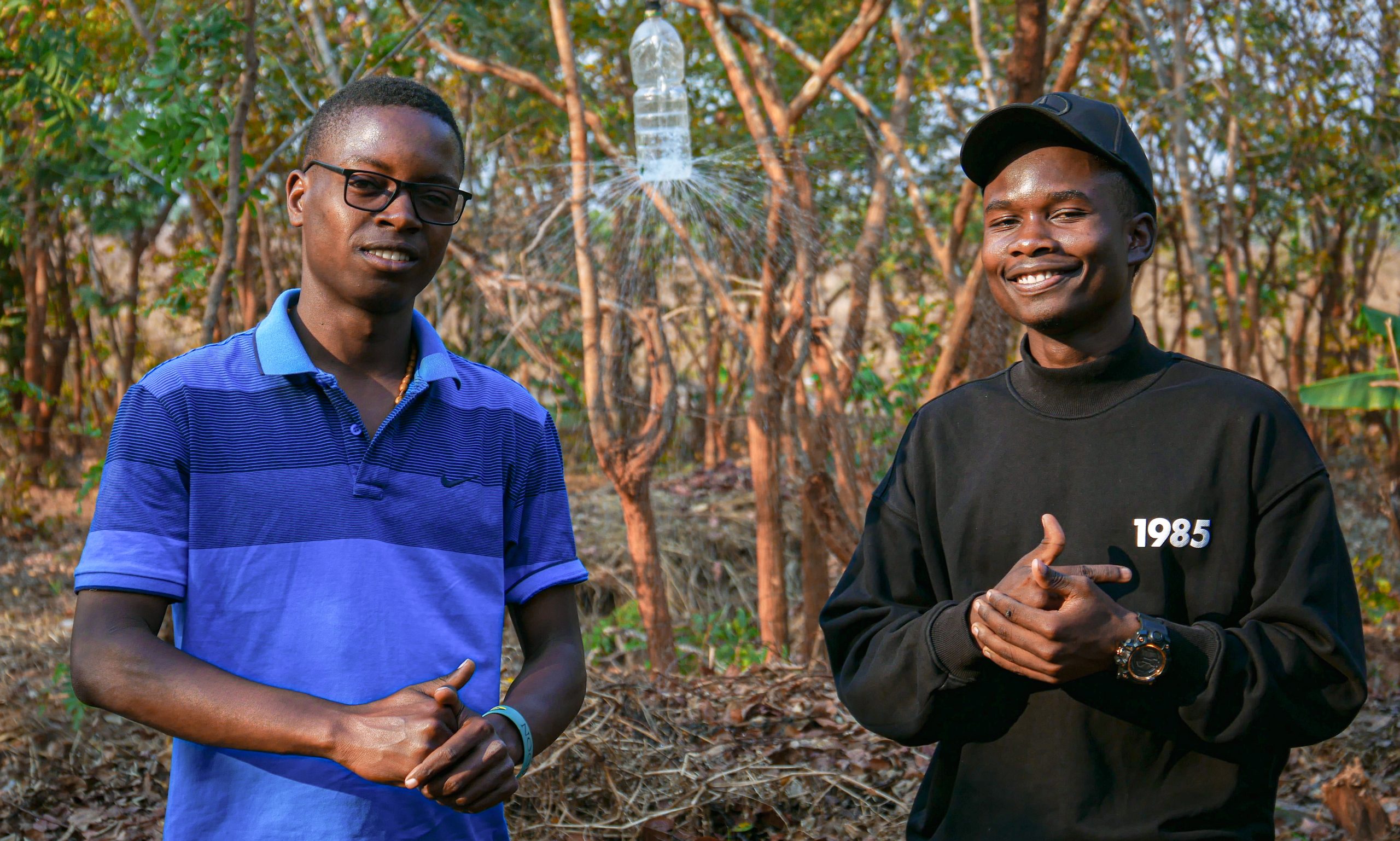In this post, Malama speaks to Paul and John about the sprinkler they made to ease some of the burden of watering, enabling them to become more efficient in their gardening
Malama: What sparked the thought to make a DIY a sprinkler; what challenges were faced trying to achieve the goal and how were they dealt with as a team?
Paul and John: Every morning session for gardening we would be arguing with each other about who would hold the horse pipe when watering the vegetables. Faced with another problem of how to sprinkle water on the ongoing piles of our project of making organic fertiliser by composting, an idea came to me and John of how these challenges could be solved or lessened. This sparked the birth of designing an irrigation system that could work effectively with minimal water pressure.
We knew that the journey we were about to embark on would be a challenging one. By sharing views and opinions on how we would go about the plan, we agreed a way forward to manage our time and set aside adequate space to work on the project. With my interest in the scientific world and my love for scientific innovations coupled with my experience in the Junior Engineers Technicians and Scientists (JETS) club and John’s love and interest in innovations, we brought valuable ideas to the table.
Our prototype used a pen stalk with holes and a container. The pen stalk acted as the water delivery system and the container was the water tank; the system looked promising and so we presented it to our supervisor, Iwell, who then gave us the tools we would need to bring our project to life. We only had simple materials to work with; much was made from scratch by me and John. This posed a challenge: how could we make a bigger system to set as the first project product? Nevertheless, we had the courage and believed in ourselves. With Iwell motivating and encouraging us along the way, we got the prototype to work.
However, it wasn’t straight forward. Water was leaking from the joints we had made. This was a big setback for us in making our final device until we thought of using superglue to mend a T junction connection for a double outlet system. To our surprise, the glue worked wonders. However, we were now faced with another problem of not having enough time to work and polish up the sprinkler system. We took our time to reflect on our first system and discussed with Iwell how we could make our final irrigation system more effective than our prototype. As a team, we encouraged ourselves and pushed ourselves into uncharted territories of deep thinking and planning. It all paid off at the end.

Malama: Besides your goal to create the sprinkler, what else was achieved through the process? What materials were used? How efficient is the tool you created?
Paul and John: Along the process of creating our sprinkler, we gained first-hand experience of using tools that we hadn’t used before such as the breast drill and jig saw. The process allowed for a close look up of our hidden abilities and capabilities. My school physics class topic ‘Simple Machines in Physics’ went from being theoretical to seeing pivot diagrams come alive. My knowledge of physics combined with John’s knowledge of design and technology made the innovative process professional to our level. I would think of an idea and John would go to the drawing board. Together we discussed, researched and finalised theories. Another physics concept – pressure – presented itself as we thought through the process. Pressure was needed for everything to work out as planned.
Theories followed up with planning, sitting down and putting our minds together on paper, before we came up with the first prototype. By setting SMART goals for our project, we knew of the reality and so we used the tools and material that were at our disposal. Recycling thrown-away material was one of the major objectives of our project, bottles came in handy as the sprinklers; thermoset pipes allowed for an effective water delivery system to the bottles. The planks were available to make a stand – after much reflection on how we can make wood obey our cause. With the knowledge of how to build air pressure, I added ideas to the project. We needed to have a closed system with only tiny, numbered openings on the bottles for water escape, to build up pressure. Paper insulating tape was also used to make an airtight system.
After testing out the first prototype, we were able to reflect and improve it to devise the final sprinkler system. Some advancements were made from being a one-point sprinkler system to being a double-point system; this called for more analytical and realistic thinking. We devised the final system as a high-point system which can be used as a one-point system as well and called it the “Primitive Modern DIY Sprinkler.”
Our device makes watering work easier for the composting piles especially, as we would leave it sprinkling water evenly on the compost; the sprinkling of water also avoids leaching nutrients in the soil as direct watering did. The system does not require much human activity except when moving it which is a little challenging because of the intricate layout of the garden. The showered water is gentle on the vegetables and only requires monitoring of water quantity.
The process of modelling the device gave us chance to understand ourselves and to build a professional relationship; we got to know each other’s weaknesses and strengths. Most importantly we were brought together, strengthening our family bond and friendship as a dual who are part of system and bigger family: the Our Moon family.
Malama: What is your message to everyone?
Paul and John: Our message to everyone is being innovative has no particular people or class but anyone can be innovative in their own way. Just make sure your innovation contributes to the quality of life of the people around you and of yourself. Alone we fall, together we stand.


